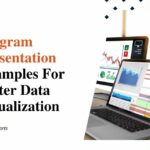9 Chart Types You Need to Know: Overcoming Visual Clutter for Clear Insights!
Data visualization represents the fastest path to insights from analytics. Yet many fall into the excess complexity trap, attempting overly intricate charts without realizing that visual clutter severely obscures understanding. Simpler is better when it comes to presenting findings for accurate interpretation and actionable decision-making.
In this article, we’ll discover the nine chart types proven most effective for overcoming visual clutter to deliver intuitive data stories and clear insights. Read on to upgrade your analytics game!
Importance of Visualization for Data Insights
Before highlighting chart options, let’s recap why visualization matters in quantitative analysis:
- Humans are visual processors able to discern patterns graphically far quicker than in tables or text. Charts leverage innate perceptual abilities for rapid insight generation.
- Clean plots reveal trends, correlations, and outliers that are not noticeable in raw data alone. Proper encodings transform granular metrics into actionable big-picture understanding.
- Research shows comprehension and recall multiplies with relevant charts compared to data or text-based reporting. Yet, misusing visuals backfires. Without understanding options and audience-aligned graphical encoding tactics, uninterpretable, messy charts undermine communication and decisions.
Hence, insight success hinges on selecting the right chart type for specific analytical needs while plotting skillfully to avoid harmful effects from clutter.
Chart Types You Need to Know
The chart taxonomy spans simple graphs to elaborate multidimensional mappings. Here are nine essential chart varieties delivering unmatched clarity for both analysis and presentation use cases:
1. Bar Chart

The bar chart is a popular go-to option for comparing categorical data visually. It plots metrics as rectangular bars against a common scale, with the bar length proportional to the value. This intuitive length-to-magnitude encoding enables easy visualization of parts making up a whole.
Vertical and horizontal bar orientations effectively showcase rankings, comparisons of metric values across groups, changes over time and other insights from categorical datasets.
2. Line Chart
A quick line chart packs an analytical punch when plotting variable progression across a timeline. It marks sequential data points and then connects them, showing trends, accelerations, drops, and correlations crucial for accurate forecasts.
Multiple lines handle multivariate time-series analysis, tracking trends synchronized and independently across data factors. Make insights pop by color coding lines per variable category.
Animating line chart data grants a spectacular visual medium to ingest complex chronological patterns quickly for informed decision-making.
3. Pie Chart
Partitioning a whole into a percentage parelied-upone chart utilizes angular slice widths to represent constituent proportional contributions in a circular graphic. The color coding and clockwise ordering create an intuitive visualization for comprehending part-to-whole and part-to-part magnitude comparisons at a glance.
Owing to this simplicity, pie charts are extensively featured in business reporting across functions. Marketing analyzes audience composition and response rates by segmentation using pie visuals. Operations monitor production metrics by line item, with priorities jumping out through proportional charting. Finance tracks expense ratios across expenditure buckets, and leadership examines market share movement by product line or region via the mighty pie chart!
4. Scatter Plot
This handy graph maps multivariate cause and effect linkages by visualizing statistical interactions between two continuous variables. By interpreting scatter positioning and proximity, uncovers correlation degrees and the exact nonlinear interplay patterns between inputs and outputs informing predictive models.
Unstructured noisy data scatter plots better statistically compared to neat regression lines, unlocking black box insights between intricate real-world variables. Code scatter markers by sub-groups through color, shape and size combinations to incorporate additional factors for deeper analysis.
5. Histogram
Showing the full profile, spread, and shape of dataset distribution is crucial for selecting statistical methods and QC checks before further analysis. Histograms visualize this effectively by dividing the value range into class intervals called bins and then plotting frequencies within each bucket as bars.
The resultant graphic reveals distribution gaps, density skews, tails, outliers, and other granular patterns that are challenging to observe in a data table or through averages alone. Color-coding density gradients help interpret.
The histogram’s distribution visualisation superpowers accelerate multipurpose data science and business intelligence applications, from guiding analytics methodology selection and machine learning model choices to flagging sample anomalies.
6. Area Chart
Stacked line charts allocate color-coded sections spanning across cumulative areas as data series progress over time visually segmenting composite totals.
Segregating overall sales across product lines while demonstrating quarterly category and totalized progression exemplifies area charts’ analytical versatility. Marketing displays consumer mix and penetration metrics using similar constructs, spotlighting group and total dynamics together.
When category development interdependencies and whole-picture overviews carry contextual importance alongside granular tracking, area charts deliver unmatched multivariate visualization capabilities, catalyzing decisions across strategic and operational analytics in any domain.
7. Bubble Chart
Displaying multivariate data triplets, bubble charts map considered variables through X and Y position scatter while a third metric tied to bubble size adds insight depth. Further coding bubbles by color representing a fourth factor boosts dimensionality.
This analytical encoding visually investigates complex statistical interplays between multiple metrics, identifying relationships like market positioning, profit ratios and penetration rates, empowering strategic business decisions backed by data.
Spanning market research, economics, demographics and scientific applications, a bubble chart’s uncanny ability to map multidimensional associations hidden in table data earns it a top visualization toolbox spot!
8. Heat Map
Heat maps utilize color coding techniques to represent density and magnitudes, enabling rapid pattern perception that is vital for visual analysis. Heat maps transform granular multivariate datasets into intuitive visualizations, conveying insights instantly by mapping values through a sequential colour scheme onto table formats.
Applications span sales metrics where cell colors denote relative performances across geographies and product lines to web analytics with their ability to flag under-converting consumer paths through site journeys uncovering barriers. Site optimization, resource management and market evaluation leverage heat map simplicity extensively for accelerating complex multivariate insight generation.
9. Radar Chart
The radar chart provides a unique presentation format, which is especially effective in representing competency assessments and progress reporting by factor. Resembling a radiating spider web, the axes represent competencies as spokes with successive data series mapped through extensions from the center on each axis. The connected endpoint bands outline areas enabling visual evaluation of strengths gaps based on the resulting geometry across assessment aspects.
From patient wellness analysis in healthcare to team member capability benchmarking in human resources, properly coded radar charts empower intuitive analytics. Their multifactor perspective visualization, which cuts through data complexities to inform decisions, positions the radar chart as an indispensable business intelligence tool today.
Conclusion
Data visualization mastery is a cornerstone of analytics today. Attempting advanced statistical approaches without graphical competency squanders potential by restricting insights to select groups alone. Democratizing analytics via impactful charts empowers an organization-wide fact-based decision culture vital for competitive success and sustained excellence.
This primer of nine foundational chart types delivers the starting toolkit to elevate analysis beyond data tables to intuitive visuals accessible across user groups regardless of analytical prowess. Select, analyze and plot utilizing the appropriate graph for your data and purpose to maximize returns from information assets. Let pure visibility power your enterprise forward!







